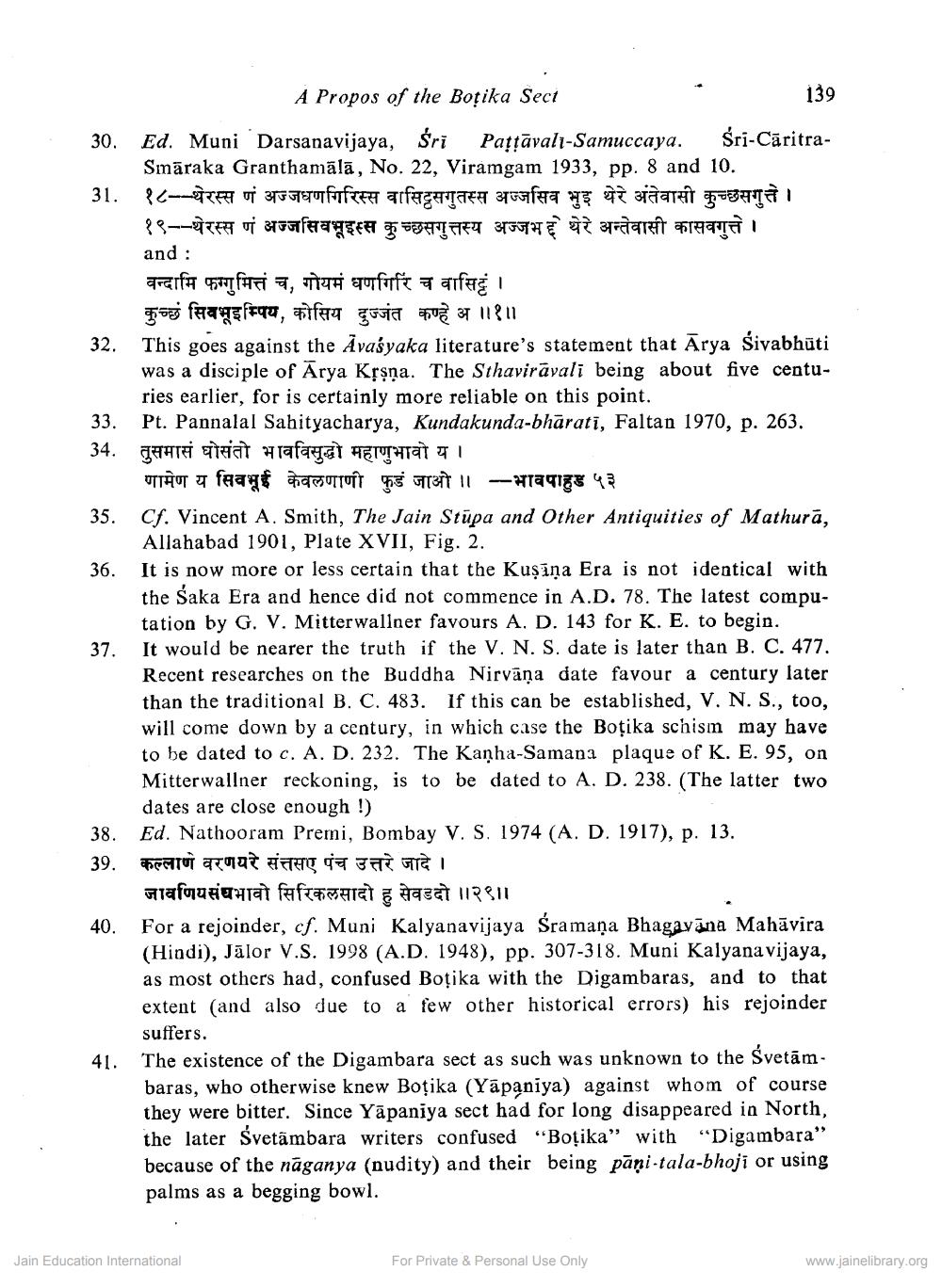________________ . 139 A Propos of the Botika Sect 30. Ed. Muni Darsanavijaya, Sri Pattavali-Samuccaya. Sri-Caritra Smaraka Granthamala, No. 22, Viramgam 1933, pp. 8 and 10. 31. १८--थेरस्स णं अज्जधणगिरिस्स वासिट्टसगुतस्स अज्जसिव भुइ थेरे अंतेवासी कुच्छसगुत्ते / १९--थेरस्स णं अज्जसिवभूइस्स कुच्छसगुत्तस्य अज्जभद्दे थेरे अन्तेवासी कासवगुत्ते / and : वन्दामि फग्गुमित्तं च, गोयमं धणगिरि च वासिढें / कुच्छं सिवभूइम्पिय, कोसिय दुज्जत कण्हे अ॥१॥ 32. This goes against the Avasyaka literature's statement that Arya Sivabhuti was a disciple of Arya Kssna. The Sthaviravali being about five centu ries earlier, for is certainly more reliable on this point. 33. Pt. Pannalal Sahityacharya, Kundakunda-bharati, Faltan 1970, p. 263. 34. Jag staat aangt FETTETET I णामेण य सिवभूई केवलणाणी फुडं जाओ / / -भावपाहुड 53 Cf. Vincent A. Smith, The Jain Stupa and Other Antiquities of Mathura, Allahabad 1901, Plate XVII, Fig. 2. 36. It is now more or less certain that the Kusina Era is not identical with the Saka Era and hence did not commence in A.D. 78. The latest compu tation by G. V. Mitterwallner favours A. D. 143 for K. E. to begin. 37. It would be nearer the truth if the V. N. S. date is later than B. C. 477. Recent researches on the Buddha Nirvana date favour a century later than the traditional B. C. 483. If this can be established, V. N. S., too, will come down by a century, in which case the Botika schism may have to he dated to c. A. D. 232. The Kanha-Samana plaque of K. E. 95, on Mitterwallner reckoning, is to be dated to A. D. 238. (The latter two dates are close enough !) 38. Ed. Nathooram Premi, Bombay V. S. 1974 (A. D. 1917), p. 13. 39. REATO ATOOT FETT 17 37 TTC जावणियसंघभावो सिरिकलसादो हु सेवडदो // 29 // 40. For a rejoinder, cf. Muni Kalyanavijaya Sramana Bhagavana Mahavira (Hindi), Jalor V.S. 1998 (A.D. 1948), pp. 307-318. Muni Kalyana vijaya, as most others had, confused Botika with the Digambaras, and to that extent (and also due to a few other historical errors) his rejoinder suffers. 41. The existence of the Digambara sect as such was unknown to the Svetam baras, who otherwise knew Botika (Yapaniya) against whom of course they were bitter. Since Yapaniya sect had for long disappeared in North, the later Svetambara writers confused "Botika" with "Digambara" because of the naganya (nudity) and their being pani-tala-bhoji or using palms as a begging bowl. Jain Education International For Private & Personal Use Only www.jainelibrary.org




